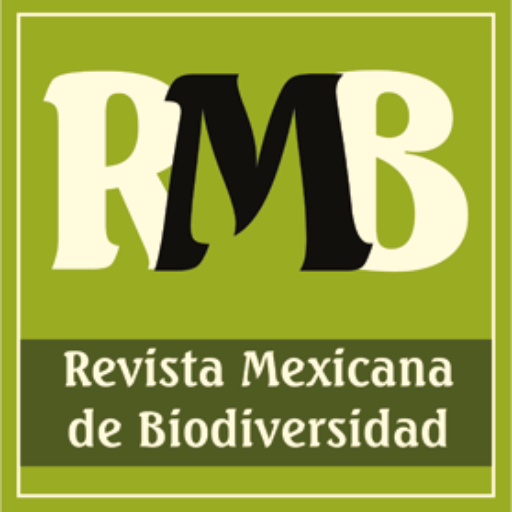Second world record of Glomus trufemii (Glomeromycota: Fungi), an arbuscular mycorrhizal fungus from a Mexican savanna
Jonás Álvarez-Lopeztello a, Laura V. Hernández-Cuevas b, *, Rafael F. del Castillo a, Celerino Robles a
a Centro Interdisciplinario de Investigación para el Desarrollo Integral Regional, Oaxaca, Instituto Politécnico Nacional, Hornos 1003, 71230 Santa Cruz Xoxocotlán, Oaxaca, Mexico
b Centro de Investigación en Genética y Ambiente, Universidad Autónoma de Tlaxcala, Km 10.5 Autopista Texmelucan-Tlaxcala, 90120 Ixtacuixtla, Tlaxcala, Mexico
*Corresponding author: fungicuevas@hotmail.com (L.V. Hernández-Cuevas)
Abstract
In Mexico, studies of diversity of arbuscular mycorrhizal fungi (AMF) are still scarce. Here we report the second record in the world, and the first record in Mexico of Glomus trufemii (Glomeraceae) from a tropical humid savanna. These results provide an incentive to increase inventories of AMF in savannas, as well as to preserve this endangered ecosystem.
Keywords:
Diversity; Oaxaca; Glomoid species; Sporocarpic species
© 2018 Universidad Nacional Autónoma de México, Instituto de Biología. Este es un artículo Open Access bajo la licencia CC BY-NC-ND
Segundo registro mundial de Glomus trufemii (Glomeromycota: Fungi), un hongo micorrízico arbuscular de una sabana mexicana
Resumen
En México, los estudios de la diversidad de hongos micorrízicos arbusculares (HMA) aún son escasos. Se reporta el segundo registro de Glomus trufemii (Glomeraceae) para el mundo y el primero para México, de una sabana tropical húmeda. Estos resultados incitan a incrementar los inventarios de HMA en las sabanas y a preservar estos ecosistemas amenazados.
Palabras clave:
Diversidad; Oaxaca; Especies glomoides; Especies esporocárpicas
Byrsonima crassifolia (L.) Kunth, and Curatella americana L.
Spores were extracted from the soil by wet sieving followed by sucrose gradient (20-60% w/v) centrifugation. Morphological characteristics and subcellular structures of the specimens were described from spores mounted in polyvinyl alcohol-lactic acid-glycerol with and without Melzer´s reagent. Observations were made with a Nomarski interference contrast microscope (Nikon Optiphot-II), and photographs were taken with a Toupcam camera (UCMOS02000KPB; ToupTek ToupView software version x64.3.7.1460). The taxonomical identification was made by comparison and contrast of morphological characters of the spores and with glomoid species at the International Collection of Vesicular and Arbuscular Mycorrhizal Fungi (INVAM) (http://invam.wve.edu/), the web page of Prof. Janusz Blaszkowski (http://www.zor.zut.edu.pl/Glomeromycota/), and Glomus species newly described (Goto et al., 2012). Voucher specimens have been deposited at the TLXM Herbarium, Centro de Investigación en Ciencias Biológicas, Universidad Autónoma de Tlaxcala.
Glomus trufemii B.T. Goto, G.A. Silva & Oehl, 2012
Sporocarps formed as loose clusters, 364-572 µm in diameter; orange-red (2.5YR5/8: Munsell Soil Color Chart) (U.S. Department of Agriculture, 1975) by reflected light, peridium and amorphous material absent. Spores formed apically on short branches of straight hyphae, elliptic, 67-94 × 90-103 µm, to subglobose, 69-97 µm, orange to orange-red (2.5YR6/8) to dark reddish brown (10R4/4) by transmitted light. Spores abortive globose, 34-63 µm, hyaline to light yellow (≈ 2.5Y8/3) when examined with transmitted light, spore wall with 2 layers sw1 and sw2 flexible. Spore wall on mature spores consisting of 2 layers, the sw1 is hyaline, fragile, 1- < 2 µm wide; the sw2 is orange brown (2.5YR7/8) to lighter orange-brown (5YR7/8) at its inner surface, 6-15 µm, laminated. Both layers continued through hyphae at the base of the spore. Pore closure a bridging septum from the sw2. Melzer’s reaction absent. Supporting hyphae light yellow (≈ 2.5Y8/4), 5-12 µm wide at the base of the spore, hyaline and narrowing to 4-10 µm beyond spore, wall 2-4 µm wide (Figs. 1-5).
The orange-brown sporocarps without peridium or amorphous material, spores abortive and 2 layered spores without Melzer’s reaction are the outstanding features of
Glomus trufemii was described from spores recovered from soils of sand dune shrub land in Brazil (Goto et al., 2012). Until now, this species had not been recorded from anywhere else; however, it now appears that it may have a broader tropical distribution in the Americas. The host species of G. trufemii are still unknown; however, they are likely grasses (Poaceae and Cyperaceae), due to their dominance in savanna ecosystems.
Thanks to the IPN for the logistical support (SIP 20161449), to J. Błaszkowski and B. Goto for the review of photographs of the specimens and comments, to anonymous reviewers of a previous version of the manuscript, to J. Newhall Williams for the revision of the language. Jonás Álvarez-Lopeztello acknowledges to Conacyt for his Doctorate Scholarship
266682.
References
Goto, B. T., Jardim, J. G., Silva, G. A. D., Furrazola, E., Torres-Arias, Y., & Oehl, F. (2012). Glomus trufemii (Glomeromycetes), a new sporocarpic species from Brazilian sand dunes. Mycotaxon, 120, 1–9.
Herrera-Peraza, R. A., Ferrer, R. L., & Sieverding, E. (2003). Glomus brohultii: a new species in the arbuscular mycorrhiza forming Glomerales. Journal of Applied Botany and Food Quality, 77, 37–40.
Oehl, F., Wiemken, A., & Sieverding, E. (2003). Glomus aureum, a new sporocarpic arbuscular mycorrhizal fungal species from European grasslands. Journal of Applied Botany and Food Quality, 77, 111–115.
Reyes, C. R., & Zamora, S. C. (1977). Estudio de una sabana de montaña localizada en las estribaciones de la Sierra Madre del Sur. Ciencia Forestal, 2, 36–64.
Schüßler, A., & Walker, C. (2010). The Glomeromycota. A species list with new families and new genera. Retrieved on April 20th, 2016, from: http://schuessler.userweb.mwn.de/
U.S. Department of Agriculture (1975). Munsell soil color charts. Kollmorgen, Maryland: U.S. Department of Agriculture.
